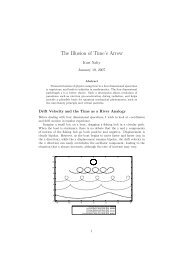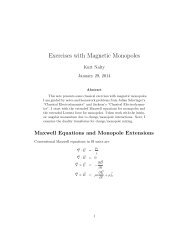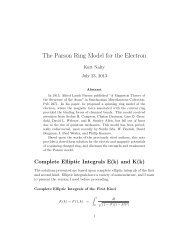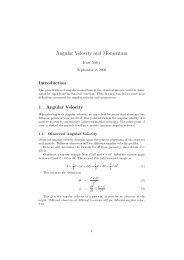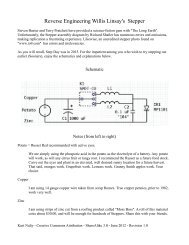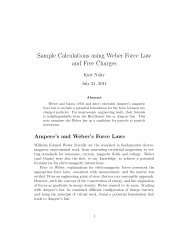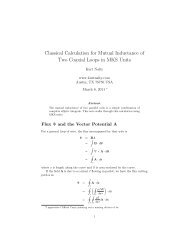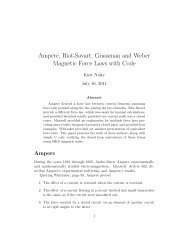Homopolar Generator Design Exercises - Kurt Nalty
Homopolar Generator Design Exercises - Kurt Nalty
Homopolar Generator Design Exercises - Kurt Nalty
You also want an ePaper? Increase the reach of your titles
YUMPU automatically turns print PDFs into web optimized ePapers that Google loves.
FEMM Model for Disk HPGThe source file for this model can be downloaded from http://www.kurtnalty.com/10MJ.fem. Step by step instructions for creating the simulation file areincluded at the end of this paper. After drawing, meshing and simulating,we have an axisymmetric contour map of flux shown in Figure 2. Using therainbow stripe widget, we can overlay a heat map of the magnitude of the Bfield, as shown in Figure 3.So, what does this tell us, and how is the information derived?For an axisymmetric configuration of currents and materials, the vectorpotential ⃗ A has zero radial and axial components. The only non-zero componentis A θ , and this is the item solved by the finite element method. Knowing⃗A, we can easily get flux and flux density. In the following equations, S is asurface area element, while s is linear path length element.⃗B = ∇∫ ⃗ ×∫A ⃗Φ = ⃗B · dS⃗=∫ ∫( ∇ ⃗ × A) ⃗ · dS⃗=∫⃗A · d⃗sΦ = 2πrA θRemembering that the generated voltage is V = fΦ, we see that thesecontours are also the voltage gradient along the rotor.V = fΦ= f2πrA θ= rωA θ= ⃗v · ⃗ARather than presenting the generator terms as dV = (⃗v × ⃗ B) · d⃗s, I preferto use the ⃗v · ⃗A.3



